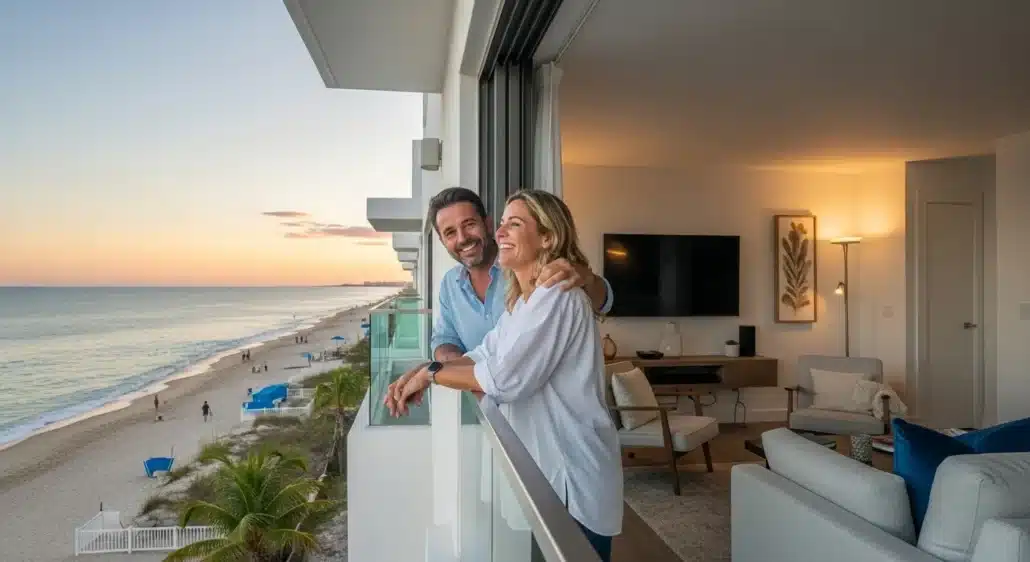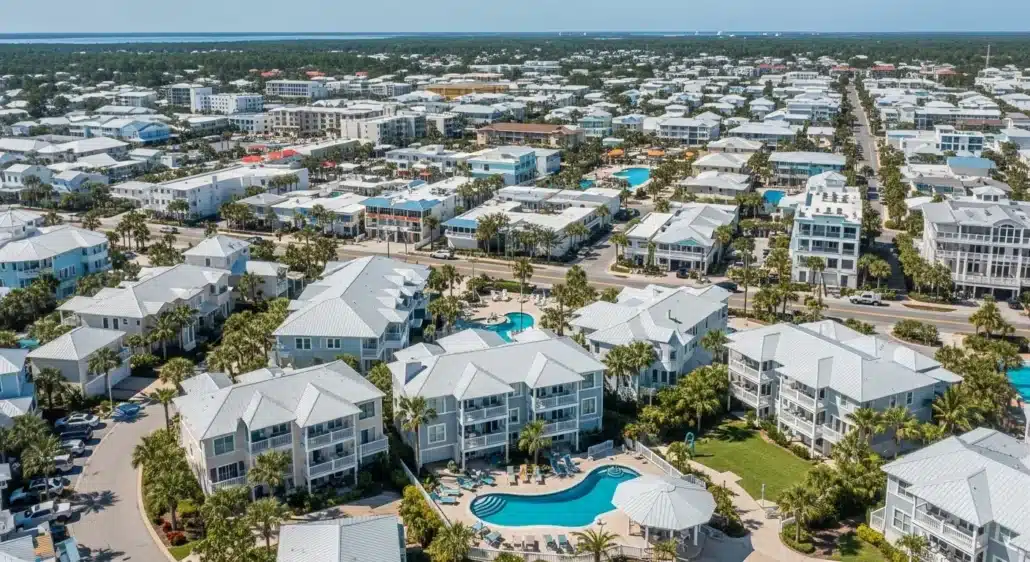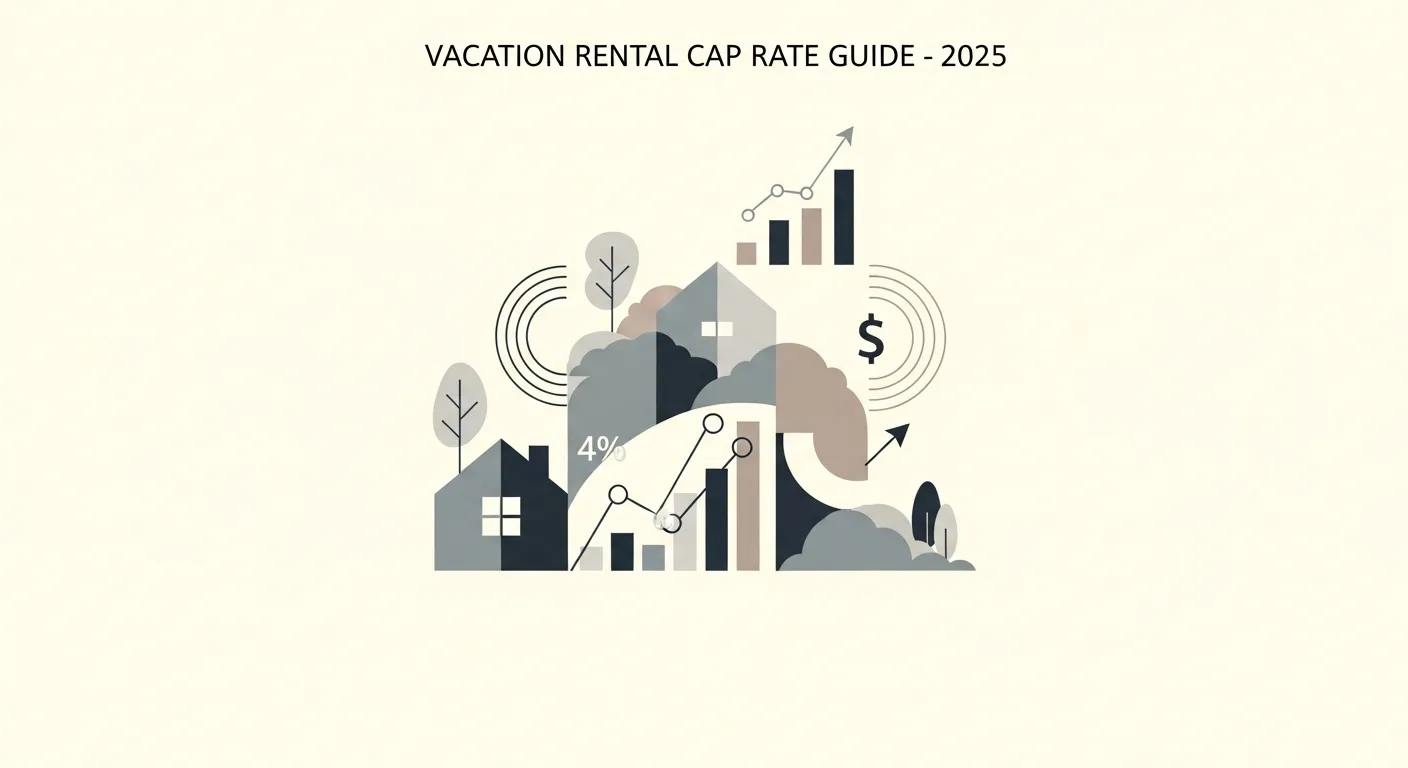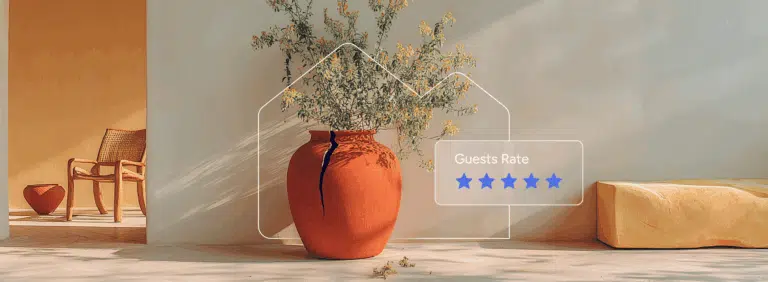Investing in a vacation rental property—whether it’s a beachfront Airbnb or a mountain cabin—always comes with one big question: how profitable will this be? To answer that, experienced investors rely on one key metric: the cap rate.

This article will walk you through:
- What the vacation rental cap rate is
- How to calculate it step by step
- What is considered a good or acceptable cap rate for a vacation rental property
- Typical and average cap rates in different situations
- How the cap rate connects to your overall investment strategy
Let’s dive into the basics and build toward a deeper understanding.
What is cap rate?
Cap rate, short for capitalization rate, is a real estate metric used to estimate the potential return on a Airbnb property. It shows how much income a property generates relative to its value. In simple terms, cap rate helps you answer this question: “If I buy this property outright with cash, how much profit would it make me per year?”

Cap rate is particularly useful because it allows investors to compare different vacation rentals or markets, even if they have different prices or income levels. It also works as a way to assess risk—higher cap rates often mean higher potential returns, but they may also come with more risk.
Cap rate formula:
Cap rate (%) = (net operating income / property value) × 100
Where:
- Net operating income (NOI) is the vacation rental’s income after deducting all operational expenses, not including any mortgage payments.
- Property value is the current market value of the property or its purchase price.
Let’s break this down further.
Step-by-step: How to calculate cap rate
If you want to analyze a potential Airbnb rental investment, calculating the cap rate is an essential first step. Here is how you do it.
Step 1: Estimate annual gross rental income
This is the total income the vacation rental will generate in one year before subtracting any expenses. Since Airbnb rentals operate on a nightly basis, you need to estimate the average nightly rate and occupancy rate:
Annual gross income = average daily rate × occupancy rate × 365 days
Let’s say you charge $150 per night and expect 70% occupancy. That would be:
$150 × 0.70 × 365 = $38,325 in gross income
Step 2: Subtract operating expenses
Now, subtract the full range of operating costs for your vacation rental business. These may include:
- Cleaning and maintenance
- Property management fees
- Utilities (electricity, water, internet)
- Insurance
- Property taxes and business taxes
- HOA or condo fees (if applicable)
- Repairs and emergency maintenance
- PMS subscriptions and tools for automation
- Advertising and listing fees
- Admin and accounting costs
- Legal or licensing fees
- Bank charges and payment processing fees
- Employee wages or contractor payments (e.g. cleaners, maintenance staff)
- Office rent or coworking space (if used)
- Travel-related expenses (property visits, inspections, etc.)
Do not include mortgage payments, down payments, or loan interest. The cap rate assumes a cash purchase so financing costs are not part of the equation.
Let’s say your annual expenses total $12,000. Subtracting that from your gross income:
$38,325 – $12,000 = $26,325 Net operating income (NOI)
Step 3: Divide net operating income by property value
Now divide the NOI by the market value or purchase price of the property. Suppose you are buying the Airbnb rental for $400,000:
Cap rate = ($26,325 / $400,000) × 100 = 6.58%
This means the property has a cap rate of 6.58%, which you can use to compare it with other vacation rental investment opportunities.
What is a good cap rate for vacation rental property?
This is one of the most common questions among new investors. The truth is, there is no one-size-fits-all number. A “good” cap rate depends on your personal investment goals and the local short-term rental market.
Here is a general guideline:
- 2% to 4%: Common in high-cost, low-risk areas like popular urban vacation destinations. These investments may appreciate over time but offer low immediate cash flow.
- 5% to 7%: Considered balanced and acceptable in many mid-tier markets. These offer steady income and manageable risk.
- 8% to 10%: Higher returns, usually found in less competitive or seasonal Airbnb spots. These can be excellent opportunities but may involve more risk.
- Above 10%: Very high return, which may signal undervalued vacation rentals or locations with higher vacancy risks or uncertain long-term performance.
Vacation rental cap rates can be higher than those of traditional rentals due to premium nightly prices and demand from travelers. However, they also often come with higher operational costs and more variable income due to seasonality.
What is the average or typical cap rate for vacation rentals?
Across the U.S., Airbnb rental cap rates can range widely. In general, vacation properties in strong leisure markets may offer cap rates from 6% to 10%, or even higher in top-performing destinations.

However, averages vary based on:
- The city or neighborhood
- Local tourism demand and seasonality
- Property type (condo, cottage, villa, etc.)
- Regulatory environment and short-term rental restrictions
So, while national data provides a benchmark, it’s important to analyze cap rates specific to the area where your vacation rental is located.
What is an acceptable cap rate?
An acceptable cap rate for a Airbnb rental property depends on your income expectations, risk tolerance, and strategy. If you’re looking for stable income in a proven market, a cap rate around 5% to 6% may suit you. If you’re targeting a higher yield and can handle occasional vacancy or operational challenges, you might seek out opportunities offering 8% or more.
You should also factor in:
- Seasonality and market trends in your vacation destination
- Your ability to manage or automate daily operations
- Possible changes in regulations or traveler demand
Understanding these factors will help you define your personal “acceptable” cap rate.
How to find the cap rate of an area
Before investing in any vacation rental, it’s critical to understand not just the property’s potential, but also the typical returns in that market. Here are a few steps to help you evaluate the average or expected cap rate in a specific location:
1. Research local Airbnb rental performance
Look at:
- Average daily rates (ADR)
- Occupancy rates
- Seasonality trends
- Local regulations on short-term rentals
Online platforms with access to market data (e.g. real estate databases, tourism boards, or vacation rental reports) often publish annual trends by city or region. This gives you a benchmark cap rate to compare your property against.
2. Analyze comparable properties
Find similar vacation rentals in the same area. Compare their nightly prices, booking calendars, and estimated monthly income. This gives you a ballpark idea of potential gross income.
If a comparable 2-bedroom unit in the same neighborhood generates $45,000 in net income and is listed at $500,000, its cap rate would be:
Cap rate = ($45,000 / $500,000) × 100 = 9%
This is a useful baseline for assessing whether a new opportunity is over- or underperforming.
3. Use local real estate data
Real estate websites, property management companies, and investor forums may offer city-level or zip-code-level cap rate data. This helps answer the question: “What is the typical cap rate for vacation rentals in this area?”
How do vacation rental cap rates compare to traditional rentals?
Vacation rentals tend to have:
- Higher gross income potential (due to short-term pricing flexibility)
- Higher expenses (cleaning, turnover, guest communication)
- Higher volatility (due to seasonality or tourism trends)
Traditional rentals, by contrast, offer:
- More stable income (monthly rent is predictable)
- Lower operational overhead
- Lower cap rate ceilings, especially in hot real estate markets
Because of these differences, a 6% cap rate might be excellent for a long-term rental in an urban center, but underwhelming for an Airbnb rental in a popular tourist town.
Limitations of the cap rate metric
While cap rate is a helpful tool, it has clear limitations. It’s important not to rely on it in isolation.
Here are the main caveats:
1. Ignores financing
Cap rate assumes a cash purchase. If you’re using a mortgage, your actual return will vary due to interest costs. For this, consider the cash-on-cash return metric.
2. Doesn’t account for future value
Cap rate reflects current performance. It doesn’t consider future appreciation or depreciation, which can have a big impact on your overall return.
3. Doesn’t include major repairs or upgrades
Cap rate is based on net operating income, so it doesn’t factor in one-time capital expenditures like renovations, furnishing, or roof replacements.
4. May be misleading in low-income or high-value markets
A property with a very high cap rate might be located in a declining market. Likewise, a low cap rate in a fast-appreciating area may still be a smart investment long-term.
Complementary metrics: Cash-on-cash return
If you’re financing your vacation rental purchase, you need to look beyond cap rate. The most helpful complementary metric is:
Cash-on-cash return (%) = (annual pre-tax cash flow / total cash invested) × 100
Unlike cap rate, this metric factors in your loan amount, down payment, and interest. It shows how much of your actual out-of-pocket investment comes back to you in cash every year.
For example, if you invested $100,000 (down payment, closing costs, furnishing), and earned $10,000 after loan payments and expenses, your cash-on-cash return would be 10%.
This helps investors understand how financing decisions impact their real return.
Need funding to get started?
Guesty Capital offers tailored short-term rental financing designed specifically for property managers and hosts. With fast approvals, flexible payment plans based on revenue, and no personal credit checks, it’s a stress-free way to fund renovations, team growth, or portfolio expansion. Learn more directly from your Guesty dashboard.
Tools that help evaluate vacation rentals
No need to guess. There are tools and platforms that make evaluating Airbnb rental performance easier:
- Revenue projection calculators: Estimate expected ADR, occupancy, and annual revenue
- Expense breakdown templates: Help you model realistic operating costs
- Market comparison dashboards: Let you compare similar listings in your area
- Dynamic pricing engines: Provide real-time rate recommendations to optimize income
These tools give you the data you need to make informed, confident investment decisions.
Final thoughts
Calculating the cap rate on a vacation rental property is a powerful way to assess potential return. But it’s only one piece of the puzzle.
To truly understand an investment’s performance, combine cap rate with:
- Local market trends
- Property-specific income and expense details
- Financing plans
- Operational complexity and risk factors
Whether you’re buying your first short-term rental or adding to your portfolio, taking the time to calculate the cap rate properly will set you up for smarter, more sustainable investments.
Now that you know how to evaluate cap rate for Airbnb rentals from every angle, you’re ready to make decisions based on real data—not just gut feeling.
FAQ
A “good” cap rate is subjective and depends on your investment goals and the local market. Generally, 5% to 7% is considered balanced in mid-tier markets, while higher rates (8-10%+) might indicate higher returns with increased risk in less competitive areas.
Vacation rentals typically have higher gross income potential due to flexible pricing but also higher operational costs and more volatility from seasonality. Traditional rentals offer more stable income with lower overhead, but often have lower cap rate ceilings.
Cap rate does not account for financing costs (it assumes a cash purchase), future property appreciation or depreciation, or major one-time capital expenditures like renovations. It can also be misleading in low-income or high-value markets.
The cash-on-cash return is a helpful complementary metric as it factors in your loan amount, down payment, and interest, showing the actual return on your out-of-pocket investment.
You estimate annual gross income by multiplying the average daily rate by the expected occupancy rate and then by 365 days. For example, $150/night × 70% occupancy × 365 days = $38,325.




